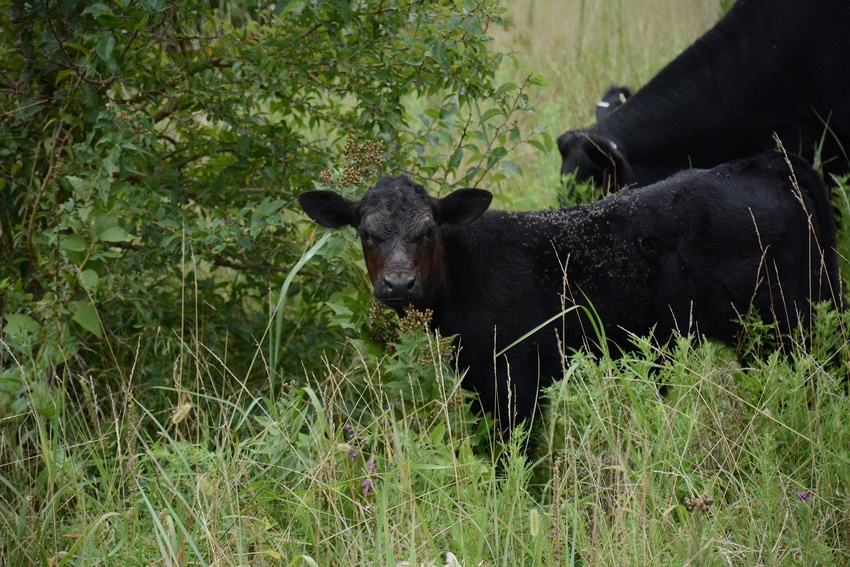
Coccidiosis is defined as an infection of an animal but with negligible clinical signs such as at least a minimum performance decrease. We need to remember that such conditions are much more prevalent than sure clinical disease.
These almost 100% "normal-doing" animals with fairly large populations of coccidia organisms over significant periods of time make up a very large proportion of our herds and are likely a necessity for quality life and immune function, but they might drive a microbiologist crazy.
Everybody knows that we need to swing the bad guys on a short rope to a low hanging limb and then out of the neighborhood. However, this happens to be wrong teaching. Sterile environments are a bombshell.
Conversely, it never ceases to amaze me as to the ability of the natural model and a highly functional immune system to retain animals in a high state of health when pathogenic (disease) organisms are readily present. The truth is that the "bad guys" are around at almost all times, but they usually don’t cause a lot of problems in the natural state. When management creates conditions that allow them free rein, then it is a totally different story.
Coccidia are protozoa that affect almost every animal species that has been investigated. Protozoa have been around for a long, long time and most of them are "good guys." However, the coccidia species of Eimeria zuernii and bovis have been sporadically taking out large numbers of calves ever since we learned how to congregate cattle for lengthy periods of time. Coccidia loves congregation areas that are used on a regular basis. Moisture and organic matter multiplies the deal.
I don’t claim to have many buddies, but I have made effort to be friends with the vast majority of my clients for a bunch of years. Recently, one of them who has been in our practice for 40-plus years asked me for my opinion. Truth is that I have been buying and drinking his raw Jersey milk for a decade and a half. He had recognized a problem and wanted my input. A little history and investigation uncovered some pretty conclusive findings.
It seemed that the producer's daughter bought a bunch of Jersey heifers back in May of 2017. They were various sizes, which after a short period of time were co-mingled with several groups of farm-raised replacements for the dairy. Several of the new calves were coughing and scouring with just a little blood, but it was not a big deal. They doctored them for several days or a week or two. Our area has averaged better than an inch of moisture weekly for most of several years. We live and operate in a humid environment.
In early December they noticed several short-bred heifers were scouring and losing condition in a matter of days. The worst were some of the South Carolina heifers they brought into the operation. It had been more than six months. When one was dead at feeding time the wake-up bell rang and I was invited in for a consult, although the heifer had been eaten by coyotes.
It sounded and looked like coccidiosis, but the affected heifers were 15 and 16 months of age, which was too old to fit most coccidiosis scenarios. We talked and kicked around other possibilities including feed changes and winter dysentery. At the time, we hadn't had any winter and there had not been any feed changes, although there was feces in the feed bunks. We treated all of the heifers from 15 months down for coccidiosis and in 24 hours got a positive response.
Since then there have been breakouts in groups of smaller heifers. What was and or is going on, and what should we do in the future?
Here are some well-established facts concerning coccidiosis over many years which can help us answer this question.
Coccidiosis is a disease of calves and stress.
We need to pay attention to nutrition and feeding and the cattle every day.
Coccidia (E. zuernii) is fast-killing and coccidia (E. bovis) is slower and not as "hot."
Calves with fairly high coccidia load but under low stress seldom get sick or noticed, develop immunity, and are mostly immune by their first birthday.
Moisture, mud, weaning, sale barns, congregation, trailering and confinement are almost always the instigator, but contaminated feed troughs on feeding areas are also frequent culprits.
The organism can remain in the soil for very long periods (decades).
Carrier animals with non-clinical coccidiosis are common.
Wet years are the worst.
Most cattle are immune by their first birthday, but this immunity can break down when stress conditions are a little more than the animals can handle. Remember that I have reported previously that high genetic production cattle have much lower stress tolerance.
There are several programs that have been developed since the 1940s to deal with coccidiosis. Most have made it possible for us to congregate calves and cattle without severe outbreaks.
If you deal with calves and use any of the classical weaning techniques, I would highly recommend that you do a good amount of study concerning coccidia and maintain a good relationship with a veterinarian that has lots of knowledge as to the life cycle, diagnosis, drug, nutritive, management, prevention and treatment programs. For those of you calving in contaminated pastures, the same is true of cryptosporidiosis. It is a coccidia that can be a bear in baby calves up to a couple of months of age.
"Cleanliness is next to godliness" is not in the Scripture, but the truth is that a fresh cut of completely recovered pasture prevents a bunch of headaches and expenses.
In his book How Not to Go Broke Ranching, Walt Davis does a wonderful job explaining how to wean calves without stress or mud. His program will pretty much eliminate coccidia. I recommend you read it and heed it.
About the Author(s)
You May Also Like




